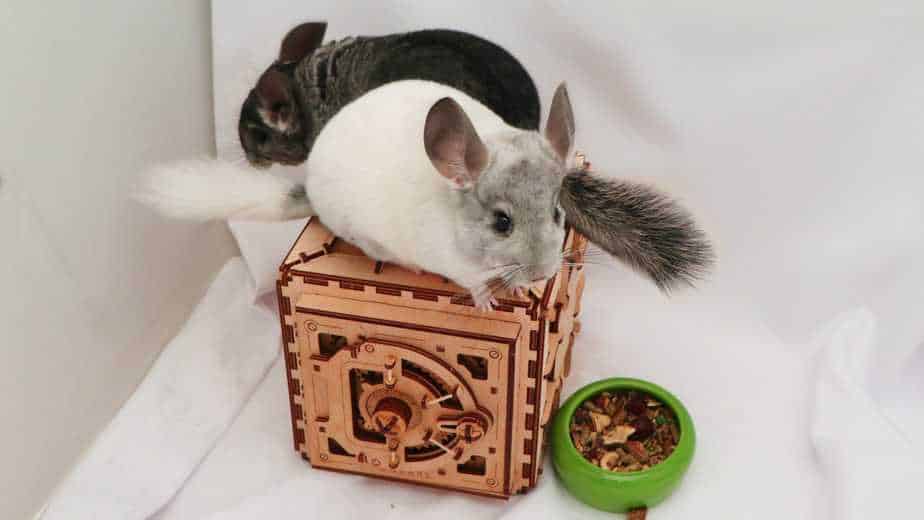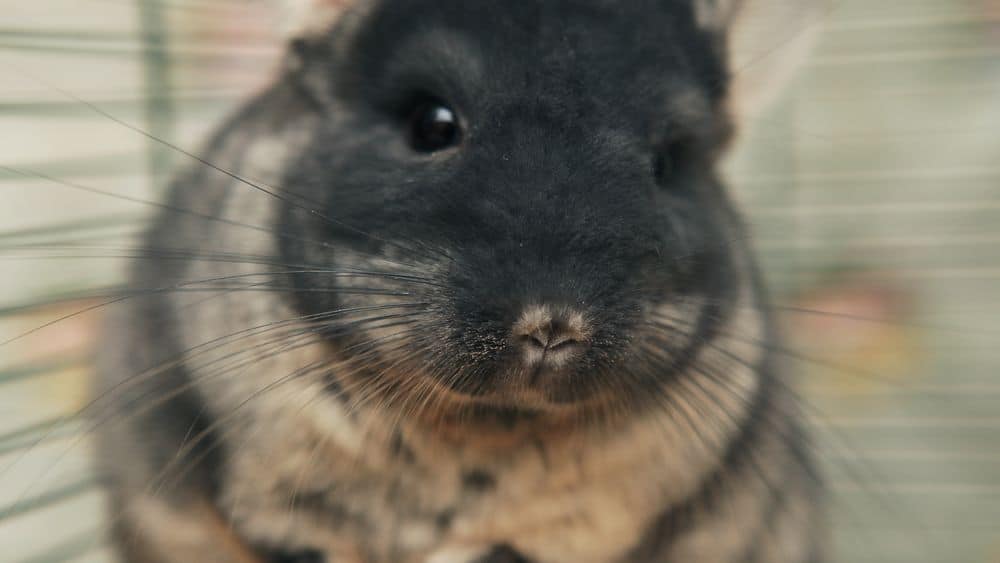
But does that include parasites that live on the skin?
You’ve likely read elsewhere that their thick fur protects them from parasites like lice.
Well, that’s partially true.
The fur helps make lice in chinchillas less common, but not impossible.
But lice are not a huge problem, as long as you detect them in a timely fashion.
Keep reading to learn how to do that, plus what you should do if your chinchilla gets lice. But first, let’s officially answer the main question.
Contents
Can Chinchillas Get Lice?
Yes, chinchillas can get lice. When a chinchilla has lice, it will present with scratching, fur biting, and skin irritation.
Lice are larger than mites. You can identify them by white flakes in your chinchilla’s fur. You can also spot lice on chinchillas by finding the the eggs, which show up as larger white flakes.
I know this answer may stand against what other websites may tell you. And it is 100% true that chinchillas have incredibly dense fur. But that dense fur does not stop all lice. It’s also 100% true that a chinchilla can indeed get lice.
On the bright side, it doesn’t happen very often.

I’ve had my chinchilla for 4 years now, and I haven’t had any issues with lice, mites, fleas, or any other form of creepy crawler making it into her fur coat.
But you do want to keep an eye on your pet and be able to effectively recognize lice, just in case it does happen to your chinchilla.
This will make the process of getting rid of the lice much smoother and allow you to act before you have any issues like your chinchilla biting and scratching at its fur, causing bald spots or worse chinchilla health issues.
With that in mind, let’s dive into those details and discuss how you can recognize lice quickly and what the next steps should be to effectively get rid of the problem once and for all.
Recognizing Lice On Your Chinchilla
Now we come to the important lesson of how to spot, recognize, and understand if your chinchilla does indeed have lice.
Some of this information we have already touched on.
Typically, as the owner/parent of a chinchilla, the first sign that you have an issue will be your chinchilla itching, scratching, or biting its own fur.
You may witness this taking place, or you may notice an area of missing fur where the problem is presenting itself.

From here, your best course of action is to hold your chinchilla and move the fur out of the way so you can visually inspect your furry friend.
You’re looking for any white flakes or anything that can resemble lice eggs. This will give you a clear indicator that your chinchilla has lice.
Don’t be overly concerned when examining your pet. You can’t get lice from a chinchilla. Lice stick to the species they infest.
Simply put: chinchilla lice do not impact humans, and vice versa.
Once you know for sure your chinchilla has lice, you need to move onto the treatment and get your chinchilla back to 100% health.
How To Get Rid Of Chinchilla Lice
Here’s where my advice is likely going to differ from what you may read on other websites.
If you know your chinchilla has lice, or you are relatively certain, I don’t recommend using something like Frontline or other remedies.
I recommend letting your vet instruct you on the next steps, assuming that they are certified to work with chinchillas.
Some owners have used frontline medications and have never had an issue. But as with any medication, there is always the possibility that something goes wrong.

With my chinchilla, I always think it’s worth the few extra bucks to ensure it is safe, healthy and taken care of. I just like to be extra careful.
Other Recommendations And Tips
I have a few other recommendations while we are on this topic. First and most importantly, I want all new chinchilla owners to understand that a chinchilla getting mites, fleas, or lice is relatively rare.
It won’t happen often.
Also, it’s important that you keep up with regular cage cleaning for your chinchilla, and avoid keeping your pet in humid and dark areas, to ensure that it doesn’t get other common issues such as chinchilla ringworm.
Keep up with your cleanings, ensure your chinchilla stays dry and you won’t have much to worry about. And don’t shave off your chinchilla’s fur to deal with lice. That is not a good way to go.
Chinchillas Getting Lice: Final Thoughts
Clearly, none of us want to worry about or deal with a chinchilla that has lice. But unfortunately, it is something that can happen.
Not often, but it’s possible.
Make sure you keep tabs on your chinchilla, so that you can notice when something is wrong. That is generally all that’s needed in order to provide the best care possible for your new chinchilla.
Chili and I wish you the best of luck with your chinchillas.
Share your thoughts.
Has your chinchilla ever had lice, and how did you handle the situation?
Be sure to share those thoughts, comments, and concerns by dropping a comment below.
As always, Chili and I appreciate you stopping by and reading. Thanks again, and we will see you next time.
Erica says
My chinchilla is is about 5 months old. I am concerned he does have lice I come to your website for a lot of advice. After reading a lot of different other website it say he may bc of the weather climate and he is “itchy” but coming back to your website and reading what you wrote it made me think maybe he does have lice. With him being new to me (I’ve had him for 2 months) he still won’t really handle him and look like how I want too Just bc I want earn his trust still. Do you recommend I just take him to a vet? But I’m just worried he will be super mad at me and I will lose his trust after earning it.
Josh says
Yes, I would have a vet take a look at him.
Robert G Taylor says
Thanks for the information. My granddaughters have contacted live and I was wondering if the chinchillas had any thing to do with that Sence they are no shelters in my home. All I will do I treat the girls when they come over to play with the Chili’s and watch how the chillis are behaving. Graywolf